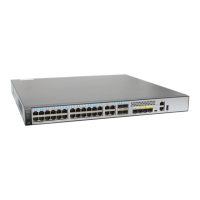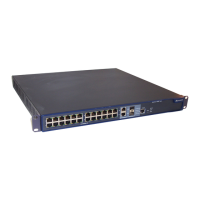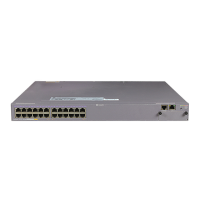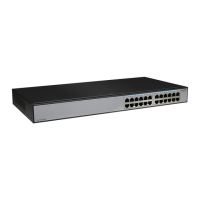Command Manual – QoS/ACL
Quidway S8500 Series Routing Switches Chapter 2 QoS Commands
Huawei Technologies Proprietary
2-16
In the case of network congestion, the switch drops packets to release system
resources. And then no packets are put into long-delay queues. The following two drop
modes are available:
z Tail drop mode: different queues (red, yellow and green) are allocated with
different drop thresholds. When these thresholds are exceeded respectively,
excessive packets will be dropped.
z WRED drop mode: Drop precedence is taken into account in drop action. When
only min-thresholds of red, yellow and green packets are exceeded, packets
between min-thresholds and max-thresholds are dropped randomly at a given
slope. But when max-thresholds of red, yellow and green packets are exceeded,
all excessive packets will be dropped.
Example
# Set the port Ethernet3/1/1 in WRED drop mode; import WRED 0 as the threshold.
<Quidway> system-view
System View: return to User View with Ctrl+Z.
[Quidway]interface Ethernet3/1/1
[Quidway-Ethernet3/1/1] drop-mode wred 0
2.1.20 dscp
Syntax
dscp dscp-list : dscp-value exp-value cos-value local-precedence-value
drop-precedence
undo dscp dscp-list
View
Conform level view
Parameter
dscp-list: Original DSCP value, which can be a single value or several values, in the
range of 0 to 63. For example, you can type single DSCP value “46”, or DSCP values “0
8 10 16” (space is required between two values).
dscp-value: Modified DSCP value, in the range of 0 to 63.
exp-value: Modified EXP value, in the range of 0 to 7. EXP is MPLS priority of MPLS
packets.
cos-value: Modified 802.1p priority value, in the range of 0 to 7
local-precedence-value: Modified local precedence value, in the range of 0 to 7.
drop-precedence: Modified drop precedence value, in the range of 0 to 2.

